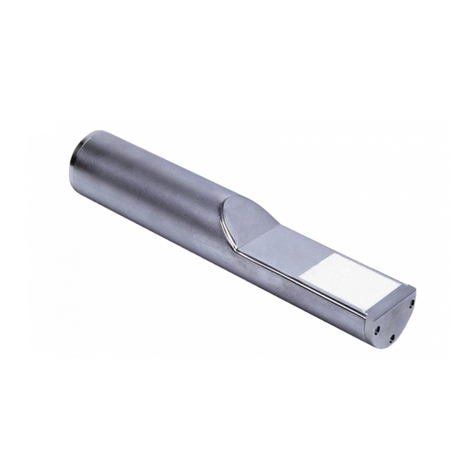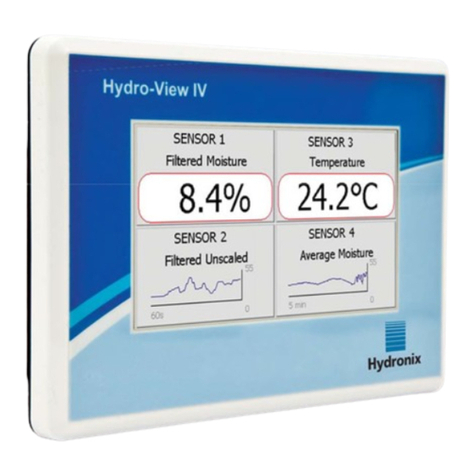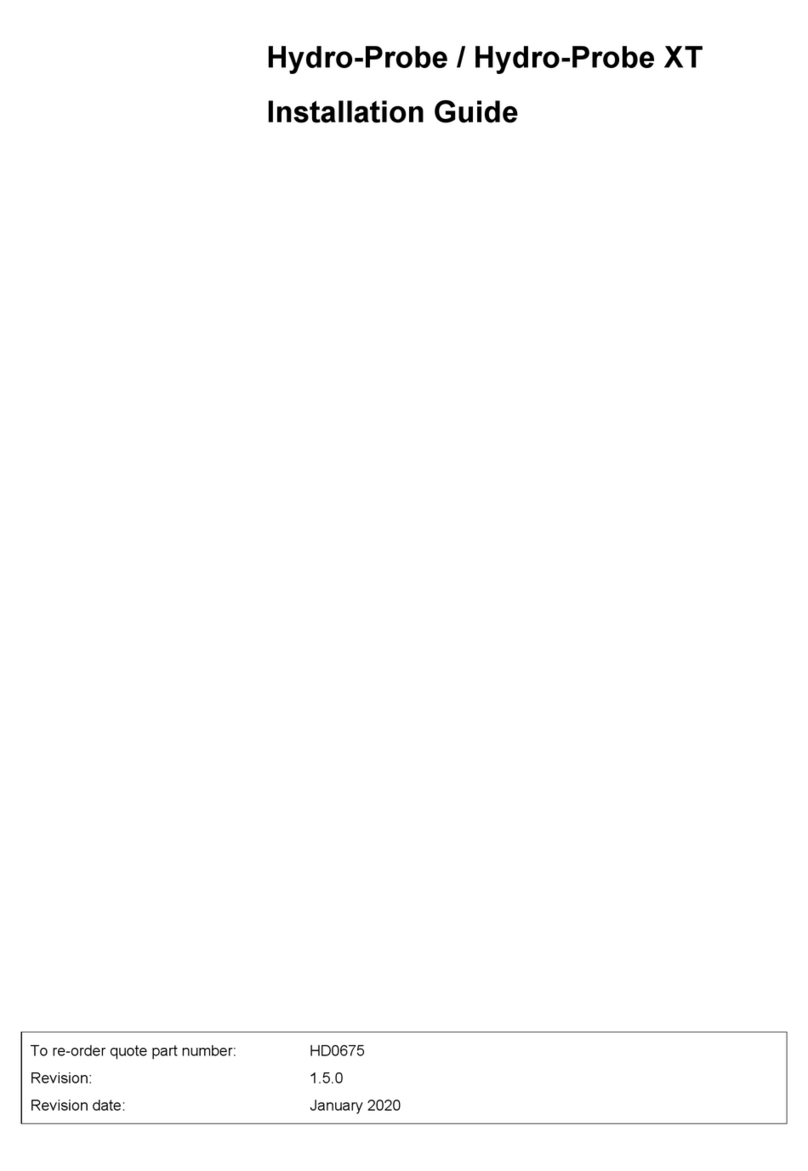
TABLE OF CONTENTS
HYDRO-VIEW USER GUIDE D0022 REV 1.06 7
List of figures
•Figure 1 - Batch weighing example.................................................................................................11
•Figure 2 - Batch mixing system.......................................................................................................17
•Figure 3 - Continuous mixing process ............................................................................................19
•Figure 4 - Hydro-View front panel ...................................................................................................21
•Figure 5 - Moisture display..............................................................................................................22
•Figure 6 - Help facility .....................................................................................................................24
•Figure 7 - Main menu ......................................................................................................................24
•Figure 8 - Trend display ..................................................................................................................26
•Figure 9 - Selecting parameters......................................................................................................27
•Figure 10 - Changing a value..........................................................................................................27
•Figure 11 - Changing options..........................................................................................................28
•Figure 12 - Sensor diagnostic display.............................................................................................34
•Figure 13 - Communications diagnostic .........................................................................................36
•Figure 14 - Sensor calibration line ..................................................................................................47
•Figure 15 - Group moisture display.................................................................................................50
•Figure 16 - Twin bin grouped system..............................................................................................51
•Figure 17 - Four bin grouped system..............................................................................................53
•Figure 18 - Panel mounting the Hydro-View...................................................................................55
•Figure 19 - Hydro-View mains transformer.....................................................................................56
•Figure 20: Connecting the Hydro-View to a Hydro-Probe II ...........................................................57
•Figure 21 - Sensor extension cable connections............................................................................58
•Figure 22 - Hydro-View rear panel..................................................................................................58
•Figure 23 - Hydro-View main circuit board .....................................................................................59
•Figure 24 - Analogue output wiring .................................................................................................60
•Figure 25 - Digital inputs .................................................................................................................60
•Figure 26 - Internal/external excitation............................................................................................60
•Figure 27 - Relay output schematic ................................................................................................61
•Figure 28 - Material selection using digital I/O................................................................................62
•Figure 29 - Factory loop-back test wiring........................................................................................65
•Figure 30 : Using test blocks...........................................................................................................68
•Figure 31 - RS232 serial port..........................................................................................................71
•Figure 32 - RS485 interface............................................................................................................72
•Figure 33 - RS485 module circuit board .........................................................................................73






























